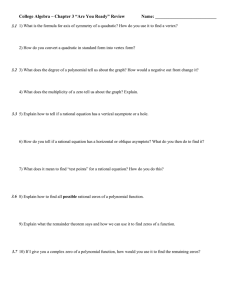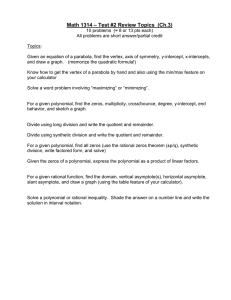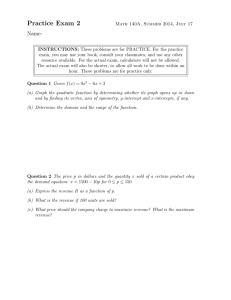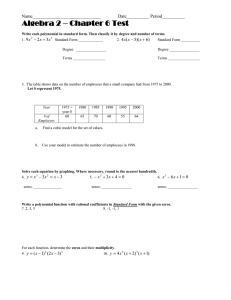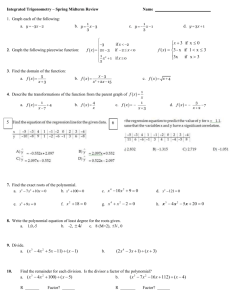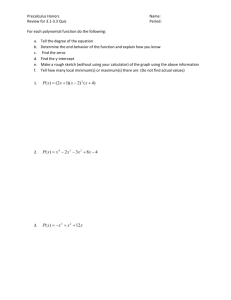College Algebra – Chapter 3 “Are You Ready” Review Name: ___________________________ b x
advertisement
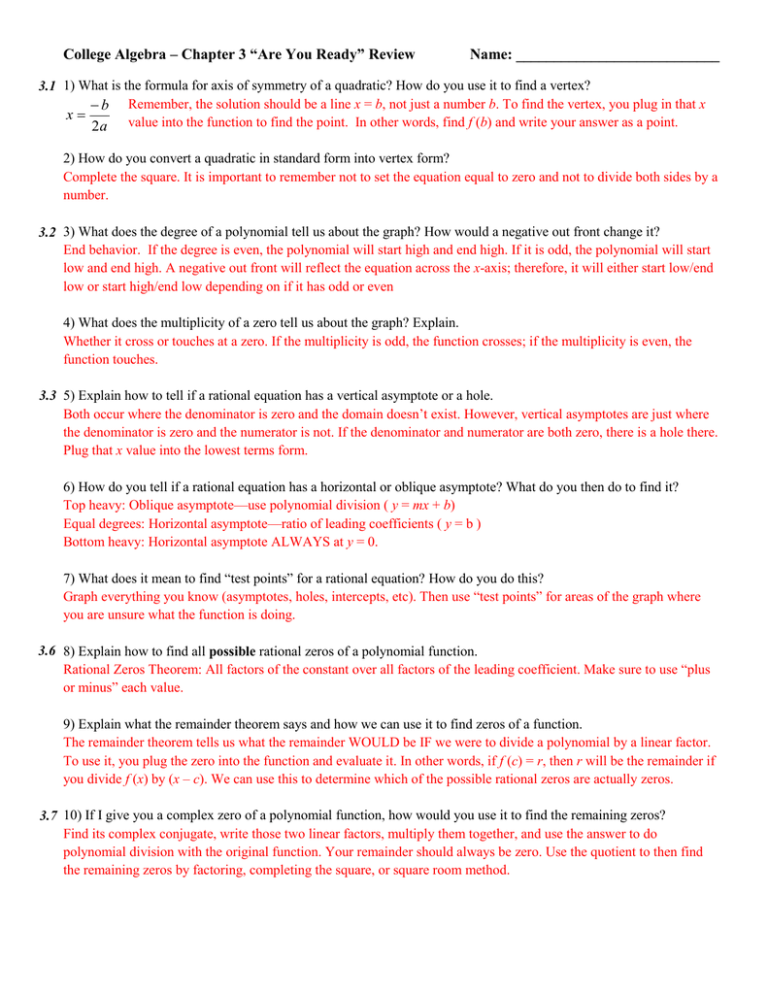
College Algebra – Chapter 3 “Are You Ready” Review Name: ___________________________ 3.1 1) What is the formula for axis of symmetry of a quadratic? How do you use it to find a vertex? b Remember, the solution should be a line x = b, not just a number b. To find the vertex, you plug in that x x 2a value into the function to find the point. In other words, find f (b) and write your answer as a point. 2) How do you convert a quadratic in standard form into vertex form? Complete the square. It is important to remember not to set the equation equal to zero and not to divide both sides by a number. 3.2 3) What does the degree of a polynomial tell us about the graph? How would a negative out front change it? End behavior. If the degree is even, the polynomial will start high and end high. If it is odd, the polynomial will start low and end high. A negative out front will reflect the equation across the x-axis; therefore, it will either start low/end low or start high/end low depending on if it has odd or even 4) What does the multiplicity of a zero tell us about the graph? Explain. Whether it cross or touches at a zero. If the multiplicity is odd, the function crosses; if the multiplicity is even, the function touches. 3.3 5) Explain how to tell if a rational equation has a vertical asymptote or a hole. Both occur where the denominator is zero and the domain doesn’t exist. However, vertical asymptotes are just where the denominator is zero and the numerator is not. If the denominator and numerator are both zero, there is a hole there. Plug that x value into the lowest terms form. 6) How do you tell if a rational equation has a horizontal or oblique asymptote? What do you then do to find it? Top heavy: Oblique asymptote—use polynomial division ( y = mx + b) Equal degrees: Horizontal asymptote—ratio of leading coefficients ( y = b ) Bottom heavy: Horizontal asymptote ALWAYS at y = 0. 7) What does it mean to find “test points” for a rational equation? How do you do this? Graph everything you know (asymptotes, holes, intercepts, etc). Then use “test points” for areas of the graph where you are unsure what the function is doing. 3.6 8) Explain how to find all possible rational zeros of a polynomial function. Rational Zeros Theorem: All factors of the constant over all factors of the leading coefficient. Make sure to use “plus or minus” each value. 9) Explain what the remainder theorem says and how we can use it to find zeros of a function. The remainder theorem tells us what the remainder WOULD be IF we were to divide a polynomial by a linear factor. To use it, you plug the zero into the function and evaluate it. In other words, if f (c) = r, then r will be the remainder if you divide f (x) by (x – c). We can use this to determine which of the possible rational zeros are actually zeros. 3.7 10) If I give you a complex zero of a polynomial function, how would you use it to find the remaining zeros? Find its complex conjugate, write those two linear factors, multiply them together, and use the answer to do polynomial division with the original function. Your remainder should always be zero. Use the quotient to then find the remaining zeros by factoring, completing the square, or square room method.
